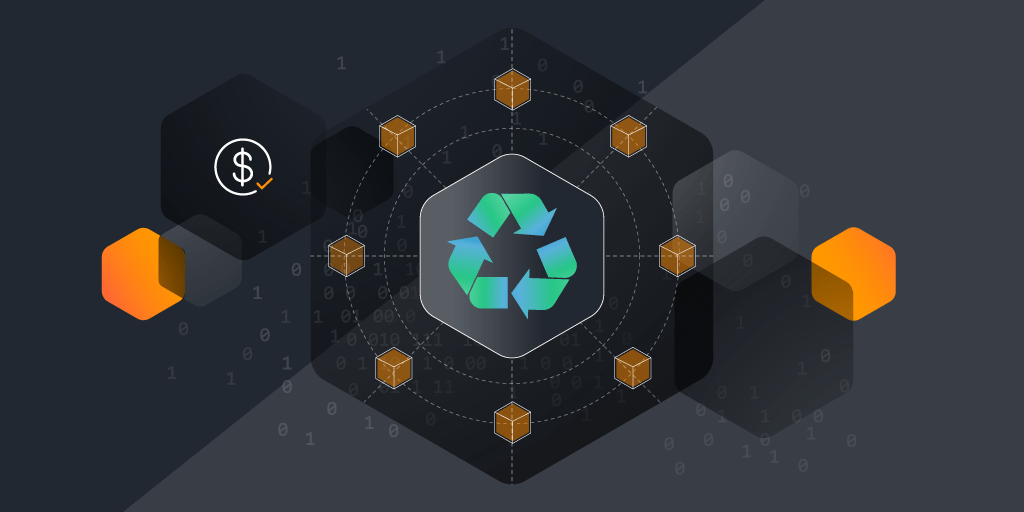
From CAASM to Risk Managament
Green IT (or Green Information Technology) refers to an environmentally responsible and sustainable use of computing resources. It includes the practice of designing, manufacturing, using, and disposing of IT systems in a way that reduces their negative environmental impact.
Why Green IT?
In this day and age, where sustainability has become an inextricable part of any future-oriented business strategy, Green IT is undoubtedly the way forward. The importance of Green IT lies in its potential to mitigate the substantial energy consumption and electronic waste generated by the tech industry. A necessity, when you consider that U.S. data centers are expected to consume about 6% of the country’s power by 2026.
There are more benefits to Green IT than energy conservation. By optimizing energy use through virtualization, efficient data centers, and cloud computing, organizations can significantly lower operational costs while contributing to environmental sustainability. Furthermore, Green IT helps reduce the carbon footprint of businesses by minimizing the use of harmful materials and ensuring the recycling of IT equipment, ultimately fostering a cleaner and more sustainable future.
Beyond the direct environmental impact, Green IT has a positive influence on a company’s reputation, improving brand perception and opening the door to investors, partnerships, and customers that hold sustainability in high regard. Companies that invest in sustainability are often seen as innovative and industry leaders. It also improves corporate culture and employee morale, as your people like to know that they work for an ethical and conscientious company.
Asset Discovery for Green IT
A critical first step in Green IT is asset discovery. It provides you with a clear understanding of all IT assets within your technology estate, including hardware, software, and network devices. This is essential for identifying underutilized, outdated, or energy-inefficient equipment. These may be contributing to unnecessary energy consumption and increased operational costs. With better asset discovery they can be identified and replaced with greener technology.
By gaining full visibility of IT assets, you can make informed decisions about optimizing resource use, consolidating or retiring redundant equipment, and ensuring that assets are managed in an environmentally friendly manner. It also helps reduce costs by identifying opportunities to downsize infrastructure and eliminate wasteful energy usage, such as powering underused servers or workstations.
Additionally, proper asset management contributes to environmental sustainability by enabling the proper disposal or recycling of obsolete equipment, preventing the accumulation of electronic waste. Asset discovery also supports Green IT through more efficient asset management: automating the discovery process, creating audit trails to ensure compliance with environmental standards, and integrating asset management systems to monitor energy consumption and performance metrics.
Optimizing Energy Efficiency
Improving energy efficiency in IT infrastructure is a key strategy for reducing both your operational costs and environmental impact. There are various ways to achieve this:
- Server virtualization consolidates multiple virtual machines on a single physical server to reduce the number of active machines, thereby lowering energy consumption.
- Optimizing data centers through proper cooling methods, such as using hot and cold aisle containment, can significantly reduce energy waste.
- Transitioning to cloud computing is also an effective way to minimize power usage in IT systems, as it decreases the number of physical machines you have to power.
- Opt for energy-efficient equipment. Energy grading labels like ENERGY STAR or EPEAT provide a standardized measure of energy performance so that you can make informed decisions about purchasing hardware that consumes less power while maintaining high performance.
Energy-efficient IT practices do not only reduce the overall power consumption of your organization’s IT infrastructure, leading to lower electricity bills. It also contributes to a reduced carbon footprint. Energy-efficient equipment generates less heat, which reduces cooling requirements in data centers, further cutting costs. Moreover, it tends to have a longer lifespan, decreasing the need for frequent replacements and lowering the environmental impact associated with manufacturing and disposing of IT hardware.
Managing E-Waste
When you do need to dispose of IT infrastructure, the next challenge starts. E-waste management is a growing challenge in the IT sector due to the rapid turnover of technology and the short lifespan of many devices. Improper disposal of electronic waste can lead to environmental pollution, as many IT assets contain hazardous materials like lead, mercury, and cadmium, which can seep into soil and water if not handled correctly.
Additionally, the sheer volume of obsolete devices poses logistical and environmental challenges for businesses, especially as regulations surrounding e-waste disposal become more stringent. Here are some steps you can take to minimize the environmental impact of your e-waste:
· Implement a clear recycling policy.
· Partner with certified e-waste recycling vendors.
· Instead of disposing of older equipment, promote reuse and refurbishment.
· Use an asset tracking system to ensure that all devices are accounted for and appropriately disposed of at the end of their lifecycle.
Proper e-waste management prevents toxic substances from entering landfills and also contributes to lowering costs. By refurbishing and reusing equipment, businesses can extend the lifespan of their assets, reducing the need for frequent purchases of new hardware. Moreover, complying with environmental regulations and avoiding fines associated with improper disposal can save costs while enhancing your reputation as an environmentally responsible company.
Measuring and Reporting Your Environmental Impact
In order to accurately report on the effects of your Green IT efforts, it is important to measure the environmental impact of IT. Key metrics for measuring environmental impact in IT include energy consumption, greenhouse gas (GHG) emissions, e-waste generation, water usage in cooling systems, and the overall carbon footprint of data centers and IT infrastructure. Tracking these metrics allows you to identify areas where you can still improve.
Reporting your environmental impact is important for transparency and accountability. By regularly disclosing environmental performance, you can demonstrate your commitment to sustainability to stakeholders, including customers, investors, and regulators. Reporting also helps to track your progress toward sustainability goals, comply with environmental regulations, and qualify for certifications or energy-related labels.
Several tools and techniques can aid in the accurate assessment of environmental impact. Carbon footprint calculators, energy management software, and environmental performance dashboards are widely used to monitor and report key sustainability metrics. Additionally, advanced analytics and AI can help predict energy consumption patterns and optimize resource use.
Implementing Sustainable IT Practices
Integrating sustainability into IT operations requires a strategic approach that aligns environmental goals with business objectives. Virtualization, optimizing server utilization, employing renewable energy sources, energy-efficient technologies, and migrating to cloud services are all effective methods. Additionally, sustainable procurement policies that prioritize eco-friendly IT equipment and responsible e-waste disposal are crucial for minimizing the environmental impact of IT operations.
Collaboration with sustainability leads or green teams is essential for the effective implementation of these practices. By working together, IT and sustainability departments can align goals, share data, and develop comprehensive sustainability strategies that incorporate both environmental impact reduction and cost efficiency. This collaboration ensures that IT decisions support broader corporate sustainability initiatives, such as reducing carbon emissions and complying with environmental regulations.
Go for Green, With Lansweeper
Lansweeper provides you with the comprehensive IT asset data and management capabilities you need to implement your Green IT practices. Discover all hardware, software, and network devices in both your physical and virtual environments. Thanks to Lansweeper’s complete overview of your IT estate, you can easily locate underutilized or obsolete equipment and make informed decisions about which assets to decommission, repurpose, or replace with energy-efficient alternatives, reducing energy consumption and waste.
Lansweeper helps you manage the lifecycle of your IT assets from procurement to disposal, so you can properly plan for the retirement, replacement, and disposal of outdated hardware that consumes excessive power or no longer meets environmental standards. This ensures that e-waste is minimized and that newer, more energy-efficient equipment is adopted where necessary.


